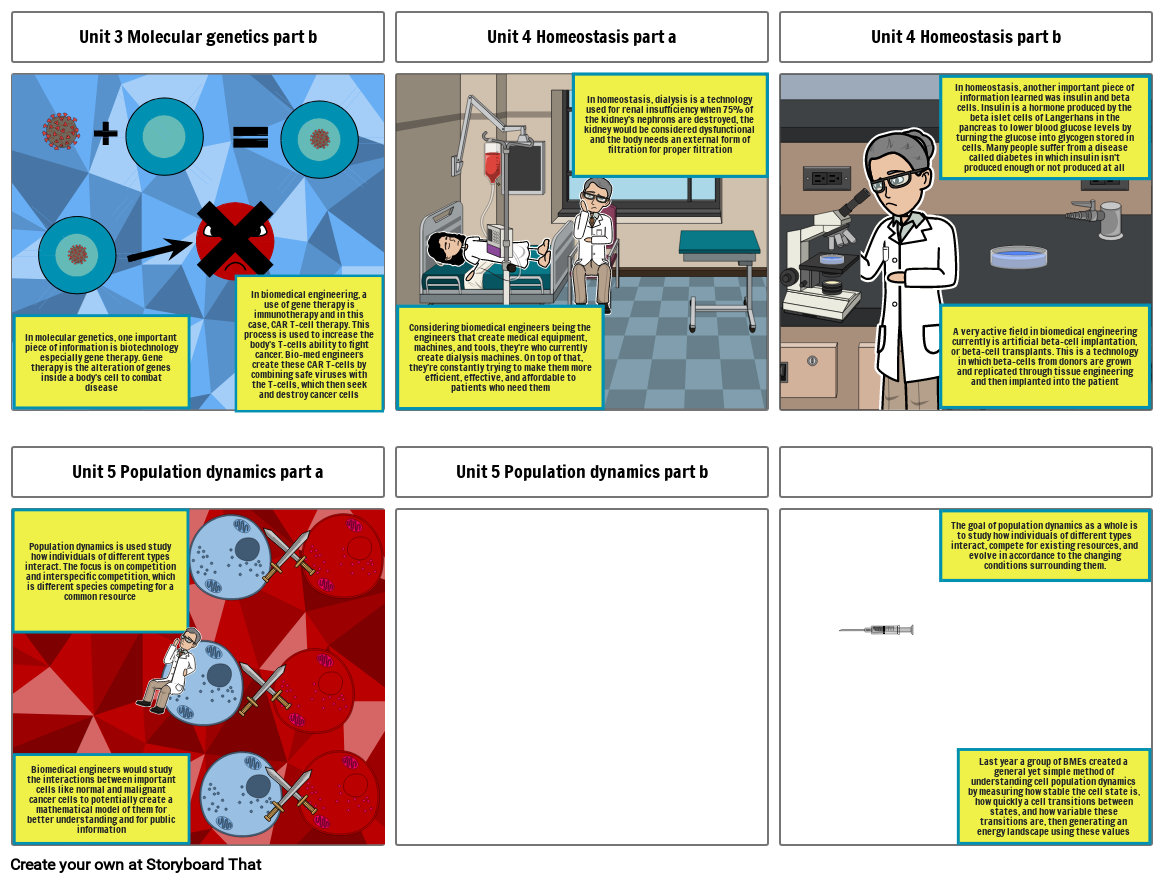Bio culminating part 2

Storyboard Text
- Unit 3 Molecular genetics part b
- In molecular genetics, one important piece of information is biotechnology especially gene therapy. Gene therapy is the alteration of genes inside a body's cell to combat disease
- In biomedical engineering, a use of gene therapy is immunotherapy and in this case, CAR T-cell therapy. This process is used to increase the body's T-cells ability to fight cancer. Bio-med engineers create these CAR T-cells by combining safe viruses with the T-cells, which then seek and destroy cancer cells
- Unit 4 Homeostasis part a
- Considering biomedical engineers being the engineers that create medical equipment, machines, and tools, they're who currently create dialysis machines. On top of that, they're constantly trying to make them more efficient, effective, and affordable to patients who need them
- In homeostasis, dialysis is a technology used for renal insufficiency when 75% of the kidney's nephrons are destroyed, the kidney would be considered dysfunctional and the body needs an external form of filtration for proper filtration
- Unit 4 Homeostasis part b
- A very active field in biomedical engineering currently is artificial beta-cell implantation, or beta-cell transplants. This is a technology in which beta-cells from donors are grown and replicated through tissue engineering and then implanted into the patient
- In homeostasis, another important piece of information learned was insulin and beta cells. Insulin is a hormone produced by the beta islet cells of Langerhans in the pancreas to lower blood glucose levels by turning the glucose into glycogen stored in cells. Many people suffer from a disease called diabetes in which insulin isn't produced enough or not produced at all
- Population dynamics is used study how individuals of different types interact. The focus is on competition and interspecific competition, which is different species competing for a common resource
- Unit 5 Population dynamics part a
- Unit 5 Population dynamics part b
- The goal of population dynamics as a whole is to study how individuals of different types interact, compete for existing resources, and evolve in accordance to the changing conditions surrounding them.
- Biomedical engineers would study the interactions between important cells like normal and malignant cancer cells to potentially create a mathematical model of them for better understanding and for public information
- Last year a group of BMEs created a general yet simple method of understanding cell population dynamics by measuring how stable the cell state is, how quickly a cell transitions between states, and how variable these transitions are, then generating an energy landscape using these values
Over 30 Million Storyboards Created

